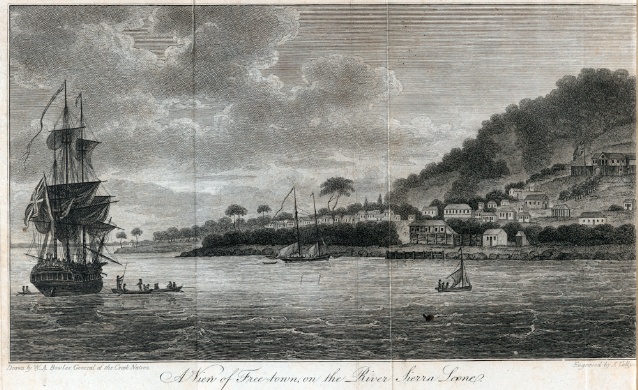|
Milton Margai College Of Education And Technology
Milton Margai College of Education and Technology (MMCET), formerly known as ''Milton Margai Teachers College (MMCET)'', is a technical university located in Freetown, Sierra Leone. It was established in 1963 and is named after Sierra Leone's first Prime Minister, Sir Milton Margai. The university has become affiliated with the University of Sierra Leone, and has been upgraded to a degree-awarding status in selected subjects. History Milton Margai Teachers College Milton Margai Teachers College was founded in 1963, and was originally housed at Tower Hill in Freetown. The mission of MMTC was to train teachers for the lower levels of secondary school (Forms 1 - 3). Until 1967 graduates of MMCET were awarded either a Teacher's Certificate (TC), or a Teacher's Advanced Certificate (TAC). In 1967 a new three-year programme was introduced, the curriculum was restructured, and both the TC and TAC where phased out and replaced with the Higher Teachers Certificate (HTC). Milton Mar ... [...More Info...] [...Related Items...] OR: [Wikipedia] [Google] [Baidu] |
Freetown
Freetown is the capital and largest city of Sierra Leone. It is a major port city on the Atlantic Ocean and is located in the Western Area of the country. Freetown is Sierra Leone's major urban, economic, financial, cultural, educational and political centre, as it is the seat of the Government of Sierra Leone. The population of Freetown was 1,055,964 at the 2015 census. The city's economy revolves largely around its harbour, which occupies a part of the estuary of the Sierra Leone River in one of the world's largest natural deep water harbours. Although the city has traditionally been the homeland of the Sierra Leone Creole people, the population of Freetown is ethnically, culturally, and religiously diverse. The city is home to a significant population of all of Sierra Leone's ethnic groups, with no single ethnic group forming more than 27% of the city's population. As in virtually all parts of Sierra Leone, the Krio language of the Sierra Leone Creole people is Freetown's ... [...More Info...] [...Related Items...] OR: [Wikipedia] [Google] [Baidu] |
Physical Education
Physical education, often abbreviated to Phys Ed. or P.E., is a subject taught in schools around the world. It is usually taught during primary and secondary education, and encourages psychomotor learning by using a play and movement exploration setting to promote health and physical fitness. Activities in P.E. include football, netball, hockey, rounders, cricket, four square, racing, and numerous other children's games. Physical education also teaches nutrition, healthy habits, and individuality of needs. Physical education programs vary all over the world. When taught correctly, P.E. class can produce positive effects on students' health, behavior, and academic performance. As part of this, health education is the teaching of information on the prevention, control, and treatment of diseases. It is taught with physical education, or P.H.E. for short. Pedagogy The main goals in teaching modern physical education are: * To expose children and teens to a wide variety of exerc ... [...More Info...] [...Related Items...] OR: [Wikipedia] [Google] [Baidu] |
Education
Education is a purposeful activity directed at achieving certain aims, such as transmitting knowledge or fostering skills and character traits. These aims may include the development of understanding, rationality, kindness, and honesty. Various researchers emphasize the role of critical thinking in order to distinguish education from indoctrination. Some theorists require that education results in an improvement of the student while others prefer a value-neutral definition of the term. In a slightly different sense, education may also refer, not to the process, but to the product of this process: the mental states and dispositions possessed by educated people. Education originated as the transmission of cultural heritage from one generation to the next. Today, educational goals increasingly encompass new ideas such as the liberation of learners, skills needed for modern society, empathy, and complex vocational skills. Types of education are commonly divided into formal ... [...More Info...] [...Related Items...] OR: [Wikipedia] [Google] [Baidu] |
Faculty (university)
A faculty is a division within a university or college comprising one subject area or a group of related subject areas, possibly also delimited by level (e.g. undergraduate). In American usage such divisions are generally referred to as colleges (e.g., "college of arts and sciences") or schools (e.g., "school of business"), but may also mix terminology (e.g., Harvard University has a "faculty of arts and sciences" but a "law school"). History The medieval University of Bologna, which served as a model for most of the later medieval universities in Europe, had four faculties: students began at the Faculty of Arts, graduates from which could then continue at the higher Faculties of Theology, Law, and Medicine. The privilege to establish these four faculties was usually part of medieval universities’ charters, but not every university could do so in practice. The ''Faculty of Arts'' took its name from the seven liberal arts: the triviumThe three of the humanities (grammar, rhetor ... [...More Info...] [...Related Items...] OR: [Wikipedia] [Google] [Baidu] |
Institute Of Technology
An institute of technology (also referred to as: technological university, technical university, university of technology, technological educational institute, technical college, polytechnic university or just polytechnic) is an institution of tertiary education (such as a university or college) that specializes in engineering, technology, applied science, and natural sciences. Institutes of technology versus polytechnics The institutes of technology and polytechnics have been in existence since at least the 18th century, but became popular after World War II with the expansion of engineering and applied science education, associated with the new needs created by industrialization. The world's first institution of technology, the Berg-Schola (today its legal successor is the University of Miskolc), was founded by the Court Chamber of Vienna in Selmecbánya, Kingdom of Hungary (now Banská Štiavnica, Slovakia), in 1735 in order to train specialists of precious metal and copper ... [...More Info...] [...Related Items...] OR: [Wikipedia] [Google] [Baidu] |
Religious Education
In secular usage, religious education is the teaching of a particular religion (although in the United Kingdom the term ''religious instruction'' would refer to the teaching of a particular religion, with ''religious education'' referring to teaching about religions in general) and its varied aspects: its beliefs, doctrines, rituals, customs, rites, and personal roles. In Western and secular culture, religious education implies a type of education which is largely separate from academia, and which (generally) regards religious belief as a fundamental tenet and operating modality, as well as a prerequisite for attendance. The secular concept is substantially different from societies that adhere to religious law, wherein "religious education" connotes the dominant academic study, and in typically religious terms, teaches doctrines which define social customs as "laws" and the violations thereof as "crimes", or else misdemeanors requiring punitive correction. The free choice of r ... [...More Info...] [...Related Items...] OR: [Wikipedia] [Google] [Baidu] |
Krio Language
Sierra Leonean Creole or Krio is an English-based creole language that is lingua franca and de facto national language spoken throughout the West African nation of Sierra Leone. Krio is spoken by 96 percent of the country's population, and it unites the different ethnic groups in the country, especially in their trade and social interaction with each other. Krio is the primary language of communication among Sierra Leoneans at home and abroad, and has also heavily influenced Sierra Leonean English. The language is native to the Sierra Leone Creole people, or Krios, a community of about 104,311 descendants of freed slaves from the West Indies, Canada, United States and the British Empire, and is spoken as a second language by millions of other Sierra Leoneans belonging to the country's indigenous tribes. English is Sierra Leone's official language, and Krio, despite its common use throughout the country, has no official status. Overview The Krio language is an offshoot of the lan ... [...More Info...] [...Related Items...] OR: [Wikipedia] [Google] [Baidu] |
Limba Language
The Limba language, ''Hulimba'', is a Niger-Congo language of Sierra Leone and Guinea. It is not closely related to other languages and appears to form its own branch of the Niger–Congo family. Dialects include ''Tonko, Sela, Kamuke'' (or ''Ke''), ''Wara-wara, Keleng, Biriwa,'' and ''Safroko''. The eastern variety, spoken primarily in Guinea, is quite distinct. Limba has a system of noun classes, marked by an old, eroded set of prefixes augmented by a newer set of enclitics. Distribution ''Ethnologue'' lists the following two varieties of Limba, spoken in Guinea and Sierra Leone. East Limba is spoken in Ouré-Kaba, Guinea. West-Central Limba is spoken in northern Sierra Leone. It is spoken in the Little Scarcies River area in east Bombali District and northeast Kambia District, as well as north of Makeni. Phonology Like neighboring Temne, Limba has an unusual contrast among its consonants. It distinguishes dental and alveolar, but the dental consonants are apical and th ... [...More Info...] [...Related Items...] OR: [Wikipedia] [Google] [Baidu] |
Temne Language
Temne (also ''Themne, Timne''; ) is a language of the Mel branch of the Niger–Congo language family. Temne speakers live mostly in the Northern Province and Western Area, Sierra Leone. Temne people can be found in a number of other West African countries as well, including Guinea and The Gambia. Some Temnes have also migrated beyond West Africa seeking educational and professional opportunities, especially in Great Britain, the United States, and Egypt. Phonology Temne is a tonal language, with four tones. Among consonants, Temne distinguishes dental and alveolar, but, unusually, the dental consonants are apical and the alveolar consonants are laminal A laminal consonant is a phone (speech sound) produced by obstructing the air passage with the blade of the tongue, the flat top front surface just behind the tip of the tongue in contact with upper lip, teeth, alveolar ridge, to possibly, as ... (and slightly affricated), the opposite of the general pattern, though one ... [...More Info...] [...Related Items...] OR: [Wikipedia] [Google] [Baidu] |
Mende Language
Mende (''Mɛnde yia'') is a major language of Sierra Leone, with some speakers in neighboring Liberia and Guinea. It is spoken by the Mende people and by other ethnic groups as a regional lingua franca in southern Sierra Leone. In southern Sierra Leone, it is the regional lingua franca that allows all tribes to communicate. Mende is a tonal language belonging to the Mande language family. Early systematic descriptions of Mende were by F. W. Migeod and Kenneth Crosby. Written forms In 1921, Kisimi Kamara invented a syllabary for Mende he called Kikakui (𞠂𞠁𞠀 / ). The script achieved widespread use for a time, but has largely been replaced with an alphabet based on the Latin script, and the Mende script is considered a "failed script". The Bible was translated into Mende and published in 1959, in Latin script. The Latin-based alphabet is: a, b, d, e, ɛ, f, g, gb, h, i, j, k, kp, l, m, n, ny, o, ɔ, p, s, t, u, v, w, y. Mende has seven ... [...More Info...] [...Related Items...] OR: [Wikipedia] [Google] [Baidu] |
Science
Science is a systematic endeavor that builds and organizes knowledge in the form of testable explanations and predictions about the universe. Science may be as old as the human species, and some of the earliest archeological evidence for scientific reasoning is tens of thousands of years old. The earliest written records in the history of science come from Ancient Egypt and Mesopotamia in around 3000 to 1200 BCE. Their contributions to mathematics, astronomy, and medicine entered and shaped Greek natural philosophy of classical antiquity, whereby formal attempts were made to provide explanations of events in the physical world based on natural causes. After the fall of the Western Roman Empire, knowledge of Greek conceptions of the world deteriorated in Western Europe during the early centuries (400 to 1000 CE) of the Middle Ages, but was preserved in the Muslim world during the Islamic Golden Age and later by the efforts of Byzantine Greek scholars who brought Greek ... [...More Info...] [...Related Items...] OR: [Wikipedia] [Google] [Baidu] |






